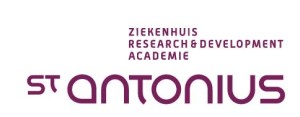Elderly with End Stage Renal Disease: to dialyse or not?
Background and objectives
Older patients approaching end-stage renal disease (ESRD) face the decision to choose for renal replacement therapy (RRT) or conservative management (CM). We describe our program in the St Antonius Hospital, a non-academic teaching hospital, in which these patients are carefully counselled / guided in a process of true shared decision making. To improve our practice we collected data on survival of older renal patients choosing either CM or RRT. We further analysed Quality of Life, patient satisfaction and healthcare expenditures before and after start of dialysis treatment.
Design, setting, participants, and measurements
A dedicated team consisting of nephrologists, social worker, who paid a home-visit if needed, renal nurse and dietician counsels all patients when the creatinine clearance drops below 20 ml/min. Once a choice has been made, dialysis treatment is prepared and delivered as needed. Patients choosing CM remained in our care.
A retrospective survival analysis was performed on all ESRD patients aged ≥70 years at the time they opted for CM or RRT. Patients alive in 2014/2015 filled questionnaires designed in collaboration with the Dutch Kidney Patients Association (Nierpatientenvereniging Nederland) on QoL, the decision process and decision ownership. Healthcare expenditures were collected.
Results
107 patients chose CM; 204 chose RRT. CM patients were older (mean ± standard deviation: 83 ± 4.5 vs. 76 ± 4.4 years; P < 0.001). Comorbidity did not differ between both groups. Median survival of those choosing RRT was higher than those choosing CM from the time first eGFR was <20 ml/min/1.73m2 (median, 75th – 25th percentiles: 4.5, 2.1 – 7.7, vs. 2.4, 1.3 – 3.6, years: P < 0.001) and from all other starting points (P < 0.001 in all cases). However, the survival advantage of patients choosing RRT was no longer observed in patients aged ≥80 years (median, 75th – 25th percentiles: 3.1, 2.0 – 6.0, vs. 2.5, 1.3 – 3.7, years, P = 0.14). The survival advantage was also substantially reduced in patients aged ≥70 years with Davies comorbidity scores of 3 and higher, in particular with cardiovascular comorbidity, although the RRT group maintained its survival advantage at the 5% significance level (median, 75th – 25th percentiles: 2.7, 1.5 – 5.6, vs. 2.1, 1.2 – 3.5, P = 0.02).
Quality of life was similar in both groups.
Patients choosing RRT considered this their own choice in 51 % (doctors choice in 37 %, spouse or family choice in 12 %), whereas patients choosing for CM considered this their own choice in 96 %!
Total hospital expenses from the moment clearance dropped below 20 ml/min were € 17,1 million for 177 patients choosing dialysis, vs € 0,7 million in 91 patients foregoing dialysis. The major part of this differences can directly be attributed to dialysis related costs. The non-dialysis related costs were lower as well in the CM group. Both hospital admissions (16 vs. 8 per year) and outpatient visits (20 vs 12 / yr) were lower in patients foregoing dialysis.
Conclusions
We show a project in ESRD in older patients. The projects stands out by the true shared decision making on the choice for RRT or CM. In selected patients, we show that similar results, both in terms of survival and QoL, can be achieved by a CM which is associated with much lower treatment burden for patients and much lower costs for society. With similar outcome at less costs we create value for patients and society by carefully engaging in a shared decision process on future treatment.
By collecting outcome data we are able to further improve the decision making process, for patients in our own center and elsewhere.


